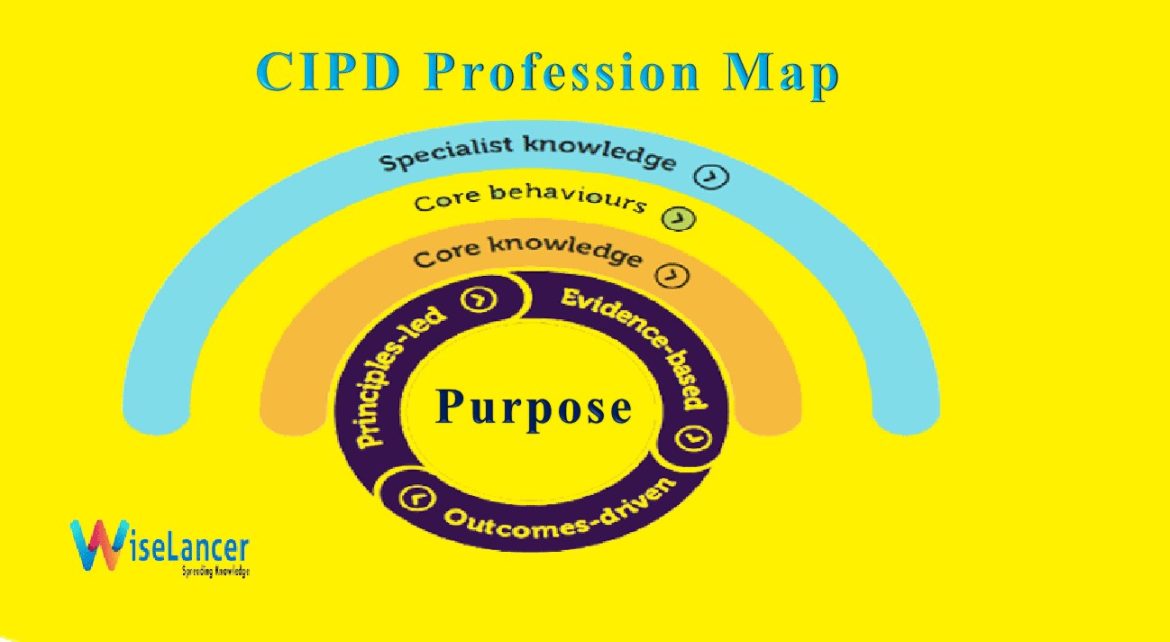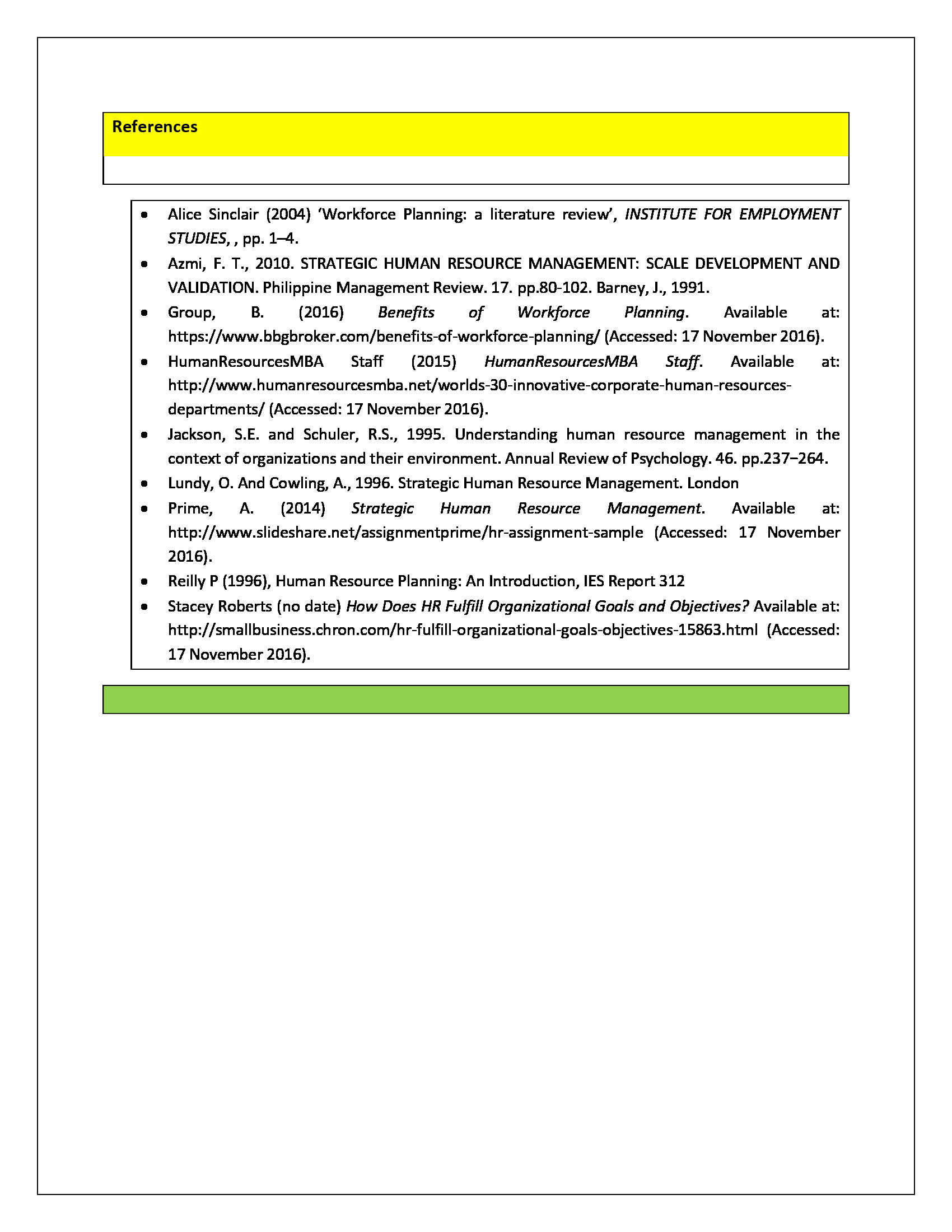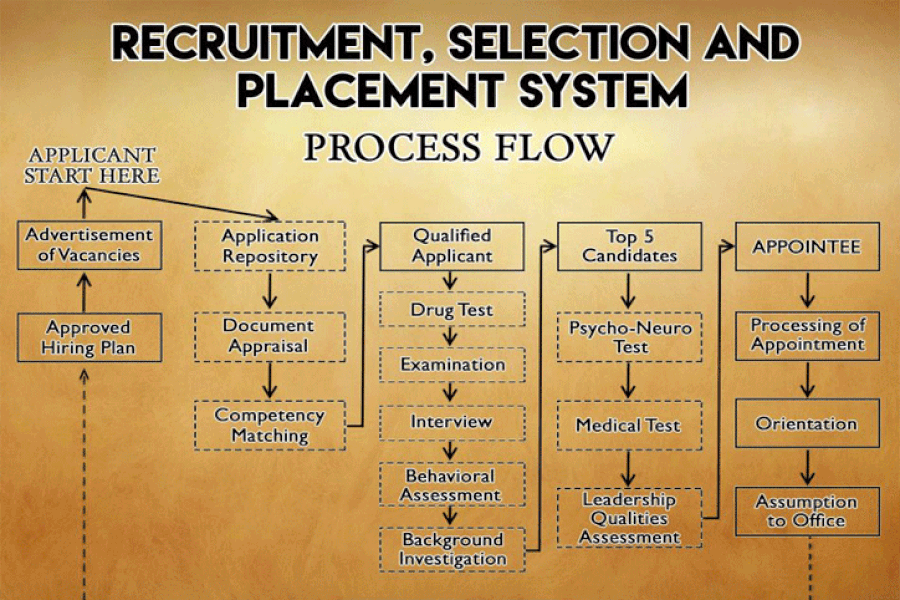The Hillingdon Hospital
The report aims to cover the business environmental analysis of Hillingdon Hospital. This analysis is initiated in the context of Human Resources aspects and policies in the healthcare facility and how the key forces shape the HR agenda of the hospital.
Contents
Introduction
History of the Hillingdon Hospital
Vision and mission statement of the Hillingdon Hospital
Macro Environment Analysis (PESTEL).
Political Factors.
Economic Factors.
Social factors.
Technological Factors.
Environmental factors.
Legal factors.
Key forces that shape HR agenda.
HRM in The Hilingdon Hospital
The Functions of The Grhselon Ulrich.
Tools for analyzing the business environment.
SWOT analysis.
Porter’s five forces analysis.
Ansoff Matrix.
Key stage of strategy formulation.
Contribution of HR to business ethics in Hillingdon Hospital
HR role in change management.
The Kurt Lewin Change Model
References.
Introduction
The report aims to cover the business environmental analysis of Hillingdon Hospital. This analysis is initiated in the context of Human Resources aspects and policies in the healthcare facility and how the key forces shape the HR agenda of the hospital. Additionally, how HR strategy is formulated and its critical phases are explained in detail.
History of the Hillingdon Hospital
The hospital’s origin was a workhouse infirmary built in 1838. In 1907, a separate female infirmary was added, and this healthcare facility was started to be managed by the Middlesex County Council in 1929, after which the site began to develop in 1932.
In October 1940, the hospital was seriously damaged due to bombings though there were no casualties; however, the hospital was moved to temporary accommodation. The new Hillingdon hospital was opened in 1967, which included 7 new wards, pathology laboratories, operation theatres, an accident and emergency department, an imaging department, an outpatient department, occupational therapy, physiotherapy, single rooms, and a canteen. The healthcare facility operates with more than 3,500 employees (Hillingdon Hospital, 2015).
Vision and Mission Statement of the Hillingdon Hospital
Vision
To serve as an outstanding provider of healthcare services through recognized academic and health partnerships, transforming the services for the provision of the best healthcare wherever required.
Mission
We provide safe, high-quality, and compassionate healthcare services and improve the well-being of the people we serve.
Values
The value of the healthcare organization stands on CARES – Communication, Attitude, Responsibility, Equity, and Safety.
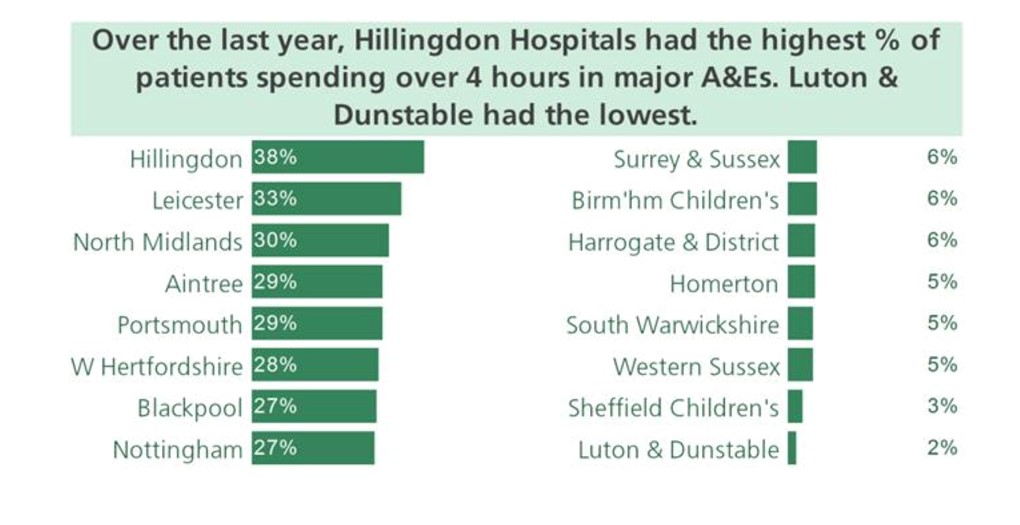
Macro Environment Analysis (PESTEL)
PESTEL analysis, combined with the Five Forces Model (Michael Porter) and analysis SWOT by Albert Humphrey, refers to a strategy that seeks to evaluate the components that might affect the performance of an organization. The PESTEL model, an abbreviation for Political, Economic, Socio-cultural, Ecological, and Legislative, focuses on those aspects that surround organizations and need to be analyzed closely.
Political Factors
Political factors have an important role in determining those factors impacting Hillingdon Hospital. That the hospital is operating in a country where Brexit is an aspect that has shaken the country’s entire economy. With this, the political environment and political systemic risks are also impacting the work environment in the country (Davis et al., 2008).
Role of non-government organization: UK has a powerful network of civil society communities, and Hillingdon Hospital should create bridges between them and sort out areas from amongst them. The groups of civil society are influential in the process of policymaking along with creating a narrative that is society-wide.
Regulation and deregulation of the government: The Brexit movement has brought in huge changes within the country’s regulatory environment. There needs to be consistency in both the policymaking as well as the application of these policies.
Size of the government budget: The budget of both national and local governments have low levels of budget, which can be beneficial for companies in the short term. However, it might result in an increase in the inflation rate in the medium term.
Economic Factors
Fluctuations of price in both international and national markets: In comparison to the level of quantitative easing that incurred in the previous decade, the cost of the services and products of the hospital and the prices of the overall products in the UK market have been somewhat sticky. Hillingdon should closely consider the fact that these deficit levels can result in rampant inflation and a serious threat related to the currency’s depreciation.
Productivity of the workforce: In the UK, workforce productivity has grown by 25 – 30% in the previous two decades, even though basic salaries fail to reflect these gains. In this way, Hillingdon Hospital can hire a skilled workforce, and that too at very competitive salaries.
The inflation rate: The inflation rate in the country can highly impact the demand for the products offered by the hospital. The higher the rate of inflation, hospitals will be required to increase prices in line with the inflation rate, which can also result in low levels of brand loyalty as well as continuous endeavors to manage costs. In such a situation, there are better strategies than cost-based pricing to undertake.
Source: West et al., (2015).
Social Factors
Gender Composition in the labor market: Hillingdon can utilize the gender composition in the labor market to determine the level of liberal nature of the society, the rights of women, as well as women’s, say in the issues of the society as well as consumption decisions. Gender composition is a handy indicator of disposable household income, priorities of the household, and needs.
Attitude towards savings: The overall culture of savings is somewhat different in the UK, which is well below 20%. Such a culture of both savings and consumption influences the type of consumption and its magnitude of consumption.
Attitude towards health and safety: This attitude is most commonly reflected through the cost structuring of the manufacturing processes and in the product quality. Hillingdon Hospital is operating at stringent norms that are held for health and safety, so in developing countries, the hospital will have to compete with players that might not have higher cost structures like Hillingdon.
Source: Archambault (2017)
Technological Factors
Penetration of mobile phones and the internet: The hospital should closely assess the penetration of mobile phones and the internet in the country as it can be requisite in developing a business model that is based upon current realities and needs.
Related infrastructure development and e-commerce: E-commerce is very crucial for the business model of Hillingdon Hospital. Hence, evaluating the technological and e-commerce infrastructure prior to entering a market is very important.
Empowering supply chain partners: The hospital should evaluate those areas where technology can empower the partners in the supply chain network. In this way, the hospital can improve transparency levels and make the supply chain more flexible.
Source: Jacobzone (2003)
Environmental Factors
Paris Climate Agreement and Commitment of National Government under the Agreement: Determining the country’s commitments as per the Paris Agreement and the general consensus level with respect to the Paris Climate Agreement in the UK.
Emphasis and spending over renewable technologies: What budget is spent on renewable energy sources, and how can the Hillingdon Hospital make this investment a part of its competitive strategy?
Legal Factors
Adherence to the Common Law: Is the country following a common law uniform for all market players? If there is arbitrariness in the judicial process, the hospital management should not be sure about its judgment.
Consumer Protection Laws: The hospital should determine the common laws. Additionally, the enforcement rate, the authorities’ attitude toward consumer protection regulation, and the role of activist groups in enforcing consumer protection law should also be evaluated.
Fundamental Forces that Shape HR Agenda
The HR department, its missions, its functions, and its specializations
To Bender et al. (2015), “as HRM develops, new functions appear. Quite normally, each new issue generates its own specialists and structures to gradually integrate in an optimal manner “. They draw up a non-exhaustive list of the main functions of HRM: recruitment and selection; work organization; staffing; administrative management of individual files; preparation and monitoring of employment contracts; remuneration, payroll management; control and discipline; social relations (relations with employees, representatives, etc.); training; statistics, social report, social climate studies, monitoring of societal themes; management of working time, schedule arrangements, leaves, absences, delays, etc.; dispute management; description of positions, functions; skills management; Career Management; evaluation of performances; mobility management; social services to the person; management of information systems; change management; internal communication; etc. Grouping by function is often possible and proposed in most HRM manuals: recruitment/selection; employment and skills management (GPEC); compensation and benefits; training; social relations.
The functions mentioned above demonstrate that the missions devolved to human resources are numerous and varied. The tasks and skills of HR managers must therefore be multiple and, above all, adaptive. These different functions, as well as the groupings which may result from them, are materialized by the existence of different services within the human resources management service and of different specializations/functions. This is the case with large (and medium) companies. It is the same situation in the hospital sector and is gradually becoming so (Castro De La Cruz, 2017).
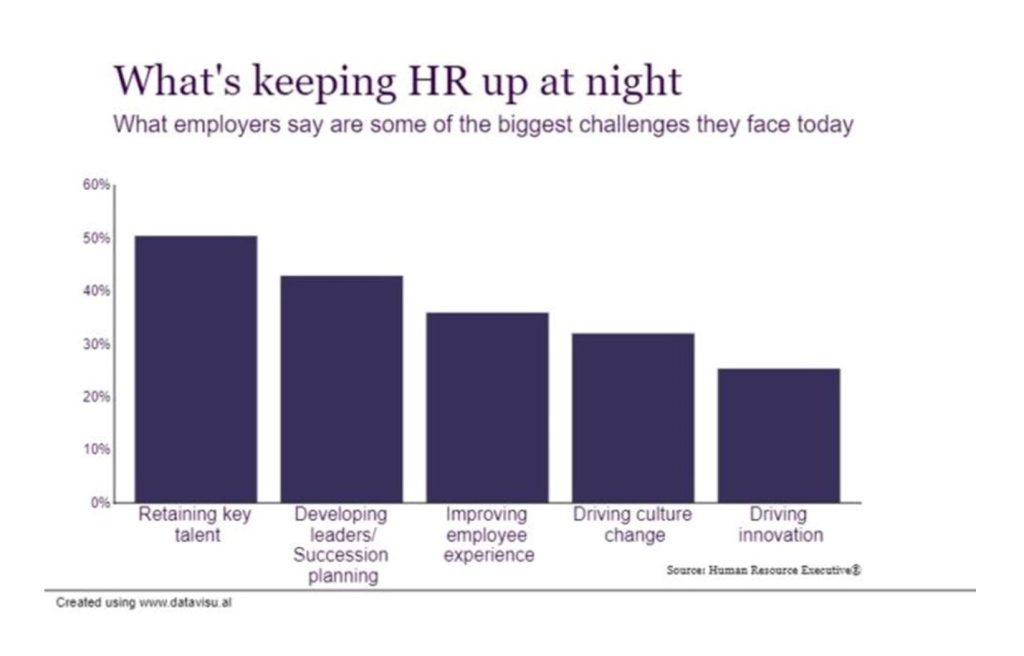
HRM in The Hilingdon Hospital
The Hillingdon Hospital’s HRM department is made up of 4 services:
(1) The personnel administration service provides administrative follow-up, particularly for contracts and appointments, the setting of salaries, salaries, schedules and services, health assessment, pension files and obligations vis-à-vis external organizations.
(2) The HR data exploitation service which takes charge of the development, management and use of consolidated data relating to personnel: collection, processing, and use of all HR data, development, adaptation, and implementation of management of collective data.
(3) the HR strategic unit – performance and quality which aims to build, implement, maintain and ensure the professionalization of HRM within the hospital: co-definition / co-development, implementation, and maintenance of all the processes of HRM, management methods and procedures, monitoring of the performance and quality of HRM processes and procedures, support/advice for institutional strategy, HRD, HR department managers, and the entire hierarchical line of departments and hospital services.
(4) the recruitment and integration service, which supports the hierarchy in recruitment and selection operations, internal and external, of staff (excluding doctors) from the search for candidates to monitor the integration of hired staff (Davister et al., 2010).
The Functions of The Grhselon Ulrich
Ulrich (1997) proposes a human resources management model allowing the creation of added value where four functions must be fulfilled and includes:
Strategic partner: Process-oriented and long-term, contributes to developing and applying the business strategy, builds and reviews its processes in line with the business strategy; the role of HRM is to align HR strategy and policies with the organization’s strategy.
Administrative expert: manages the employment contract, legislative, administrative, and payroll (operational / process); the role of HRM is to design and deliver effective HR processes; this is the traditional role of HRM.
Agent change: person-oriented, but in the long term, it is the long-term oriented activities that bring support to workers; the role of HRM is to develop the capacity for change, among other things, by identifying and promoting behavior that will support the firm’s competitiveness.
Employee champion: short-term person-oriented; he supports employees on a daily basis; the role of HRM is to manage the expectations and daily problems of employees.
For Dietrich and Taskin (2016), “these different roles are not mutually exclusive, they combine. This combination, and therefore this multiplicity of roles, requires new skills within the HR function. HRM is supposed to ensure that it achieves satisfactory results by giving equivalent attention to the four roles it must take on”.
Source: Andrade and Devlin (2014)
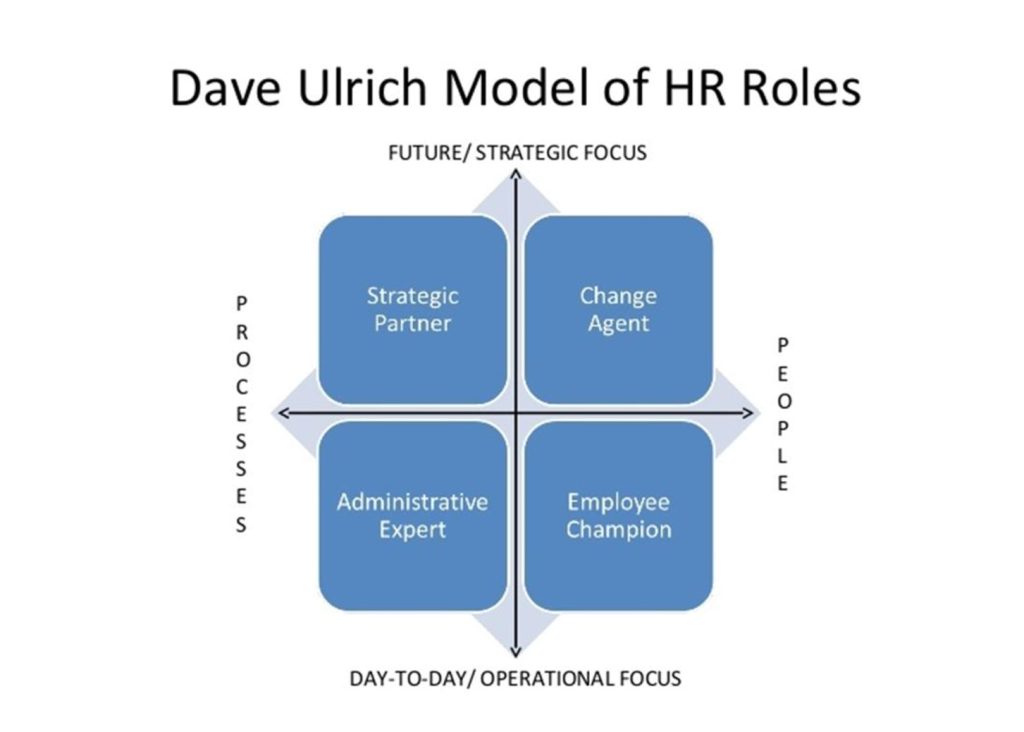
Tools For Analyzing The Business Environment
SWOT Analysis
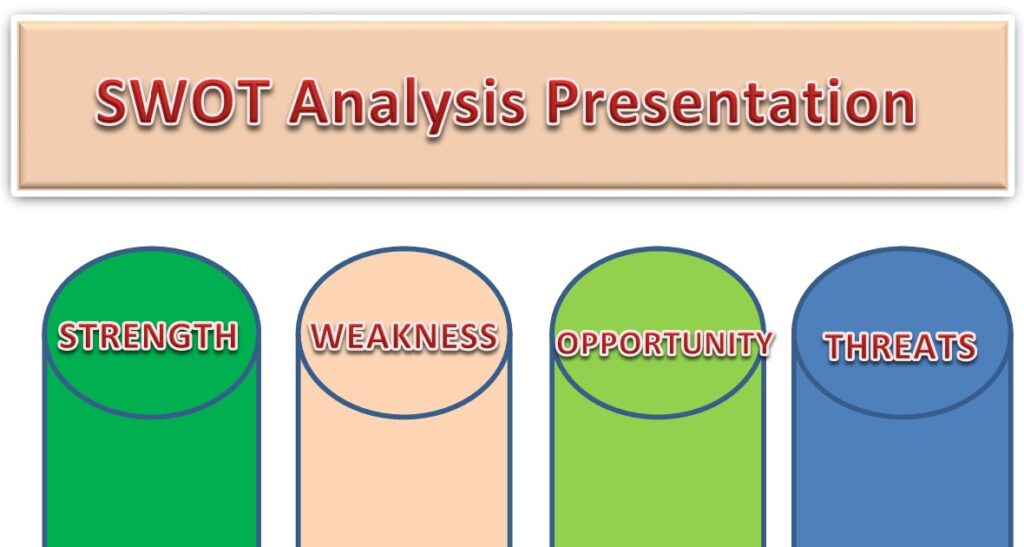
Strengths
- The Hillingdon Hospital represents the main hospital unit for care in the Lausanne area: 64% of hospitalized residents in the district are, in fact, in its departments. The Hospices Group is also a major player in the private market, with a 19% market share in the canton of Vaud.
- Hillingdon Hospital presents implicit centers of advanced medicine in terms of its hospital activity. They are distinguished in particular by a significant volume of cases treated presenting a high complexity, excellence in research, and a broad influence which results in strong attractiveness.
- Training and research are the foundation of innovation at Hillingdon Hospital. These strengths are strengthened by the establishment’s relations with its key players, the Faculty of Biology and Medicine at TLC and ICR.
Weaknesses
- The hospital needs more room for operations in terms of management of the institution, although they benefit from a specific law in this area. The hospital is responsible for its financial balance by still being a state service. However, it needs to have a wide choice of its means (finances and human resources) in the context of competition. Furthermore, they do not benefit from legal personality.
- The current efficiency of the hospital needs to be improved as the environment becomes more competitive. Although the healthcare institute has started the ambulatory shift, it still needs to be stepped up. Alternatives to hospitalization (outpatient surgery) should be developed, considering new funding methods and the resulting comparisons between health establishments.
- The hospital does not present a sufficiently structured and convincing unifying project vis-à-vis the facility’s departments and establishments, and employees’ feeling of belonging to the institution is uneven.
- Based on a proposal from the General Management, the Council of State has already decided, in May 2002, to undertake a reorganization of the hospital aimed at reducing the number of hierarchical levels and specifying the roles and responsibilities of the various levels in particular between general management and departments and between departments and services. The first stage of this reorganization was implemented in September 2002.
Opportunities
- The patient profile is changing significantly: aging of the population, migratory movements, and more informed and demanding patients. The practice of medicine is also changing with the introduction of new forms of care. These structural changes force the institution to adapt its responses to its environment and offer the best possible services. In this sense, it is a complete vector of evolution for the health organization.
- Patients “outside the region” represent nearly 16% of the care activity of the hospital. Although the hospital has a good location, this situation still needs to be sufficiently exploited by the institution, which could take advantage of it to increase its attractiveness in specific fields or pathologies. The Group’s strongest appeal is in the cantons of Ealing, Harrow, Buckinghamshire and Hertfordshire (around 5% of hospitalizations); on the other hand, market shares are only 3% for the other regions.
Threats
- According to UKACR demographic forecasts, population growth will be strongest in districts where the hospital does not currently enjoy a strong position (Nyon, Rolle). However, the London Borough of Hillingdon and the surrounding regions of Ealing, Harrow, Buckinghamshire and Hertfordshire will stagnate. The new mode of financing by services as well as the new cantonal hospital organization giving more weight to future sector hospitals will cause an increase in competition between actors within the framework of a limited population pool. In addition, the concentration of specialized care in four sectors, as proposed in the health policy report, will ultimately lead to an increase in the capacities of these centers and will consequently modify the flow of patients from these hospitals to the reference university hospital.
- In the coming years, budgetary pressure will be intense. On the one hand, the paying partners (states/insurers) will increase efforts to control costs. On the other hand, the number of insurers will continue to decline, increasing the bargaining power of the remaining groups. The revision of the NHS and the possible transition to a monist financing system will contribute to this pressure.
- The hospital is highly dependent on human resources (3,500 employees on the regular budget in 2002 and 500 others on funds) in the context of a growing shortage of nursing staff and particular medical specialties (pediatrics, psychiatry, anesthesiology, for example ), in the USA, UK and most of the European countries. Hence, human resource management signifies a major strategic factor for the organization’s successful future.
Source: Berkman et al., (2000)
Porter’s Five Forces Analysis
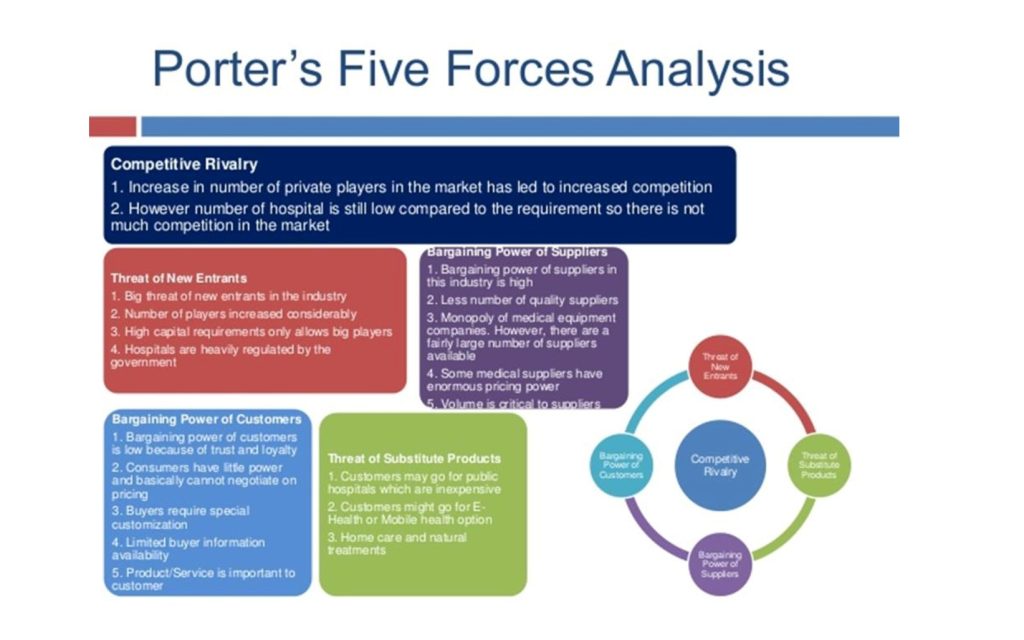
Bargaining power of suppliers
The bargaining power of Hillingdon Hospital is moderate. Among significant factors, medical equipment and physicians are considered to be a supply for the healthcare institute. The hospital has set up its own information technology system. In addition, the hospital has a highly sophisticated Medicare system, and there is high competition among the suppliers, resulting in price reductions and a positive indicator for the hospital. A huge base of suppliers is associated with the supply of products to Hillingdon Hospital, which means it is easier for the facility to switch suppliers. Since the hospital purchases supplies in huge volumes, it tends to reduce the bargaining power of suppliers.
Bargaining power of consumers
For Hillingdon, the bargaining power of consumers is low since the hospital has a competitive edge over its customers. Primary consumers of Hillingdon Hospital services are patients. Presently, the hospital provides 45% of care to the region where it operates and 15% to the broader Hillingdon region. The hospital has diversified its healthcare facilities and established institutes or departments to deliver quality care to patients. The central message of the hospital, ‘Patient’s First,’ indicates that the employees and physicians at the Hillingdon Hospital relentlessly work to provide measurable quality services. The hospital has also created state-of-art technology for obtaining patient information and utilizing various applications for tracking patient-related data. The facilities of healthcare services are very important, and there is a huge consumer base for Hillingdon Hospital services; hence, buyers are left with limited choices, lowering consumers’ bargaining power.
Current rivalry
For Hillingdon, the competition is moderate. The reason is that the industry’s size is huge, and the hospital has been operative for many years. Barriers to entry are higher, and there are very few competitors in the market. The main competitors of the hospital are Royal United Hospital. Though many other healthcare facilities operating in the region tend to compete with Hillingdon, these rivals are less powerful. Hillingdon has spread operations over the industry and is the only acute and specialist service provider closest to Heathrow Airport for emergency treatment services. Hillingdon also provides these services in Mount Vernon Hospital in cooperation with the East & North Hertfordshire NHS Trust. Moreover, government regulations and legislation limit the competition level in the health industry; hence the intensity of existing rivalry could be higher.
Threat of substitutes
The primary substitute for Hilingdon is Royal United Hospital, which provides the same service level. The regions being covered and the number of physicians visiting the hospital is close to Hillingdon. Many other smaller health systems are operating in the region that is directly competing with Hillingdon. The threat of substitutes is low, and the hospital has the potential to expand its operations in other regions. Substitutes are performing low, and their service could be of better quality in comparison to Hillingdon Hospital. Additionally, there is a factor of higher costs to switch from the hospital and go for a substitute. Since Hillingdon Hospital offers high-quality service, the threat of substitutes is low.
The threat of new entrants
This threat is significantly low as the barriers to entry are incredibly high. No firm can easily enter the industry because of the highly sophisticated healthcare industry in the country. The cost of entering in the industry is very high, which means that entering the health industry is very difficult hence lowering the threat of new entrants.
Source: Pilzer (2002)
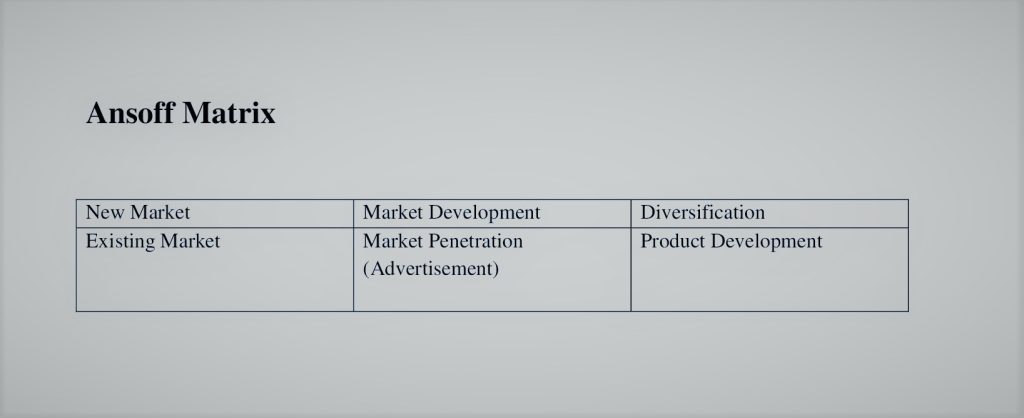
Ansoff Matrix
New Market
Market Development
Diversification
Existing Market
Market Penetration (Advertisement)
Product Development
As per the Ansoff model, Hillingdon Hospital is specialized in acute A&E services. The healthcare facility will soon introduce Mental Health services in the hospital. The hospital has hired several healthcare assistants trained and educated in Mental Health Nursing. When a patient in mental health care is admitted to the hospital, they can receive in-house care. The hospital will gradually introduce some clinics around mental health. Then after constant monitoring as well as rapport building, the hospital will expand operations to other specialties, i.e., Adult, child, Rehab, etc.
Key Stage of Strategy Formulation
Hillingdon HR management, from its People Strategy 2017-22, has based on six strategies that are grouped into two main axes:
Axis of differentiation (What to do?):
- Promote the hospital’s role to meet better the needs of the region’s population and the cantons.
- Promote the creation of a limited number of poles to concentrate efforts in advanced medicine and ensure leadership at the country level in the selected fields.
Axis of innovation (How to do it?):
- Face the increased competition by strengthening the capacity for innovation through research and training.
- Strengthen relationships with other players in the health system to better benefit from synergies.
- Face the context of a shortage of professionals by improving human resource management to attract and retain the best professionals.
- Rethink the approach used in the search for efficiency and ensure the financial balance of the institution.
To fulfill its care and research missions, the hospital will deploy the abovementioned strategies to allow the institution to differentiate itself and innovate. Differentiating yourself from the point of view of advanced medicine implies making choices and setting priorities, particularly regarding the lines of research pursued. It is also a question of innovating in the framework of patient care in order to stabilize, maintain, and even develop the population pool (Cady et al., 2011).
Contribution of HR to Business Ethics in Hillingdon Hospital
It is necessary to consider that each actor, whatever his function in the hospital, medical or nursing staff, teacher, researcher, director of the establishment, supervisory authority, regulator, or financier, contributes to the system’s ethics. Hospital managers must therefore question the ethics of health management or how health management must be ethical. This question is all the more fundamental in the context of social crisis, financial tensions, economic demands, rising medical consumerism, suffering at work, and loss of meaning that the issue of health management is – like the subject of the action – the human: the users (patients, residents, children and adults with disabilities, vulnerable people) and professionals of the health system who contribute to health and medico-social care, training, research, and innovations (Cordeiro, 2003).
For the health manager, having ethical management means respecting principles:
- Be at the service of its function and through it at the service of the population’s health in a territory, of its collaborators and staff.
- Ethical management is that which gives meaning to each and which guarantees the ethics of the collective.
- The one who embodies consistency and ensures cohesion.
- The one who sets the rule and applies it by setting an example.
For example, suppose the establishment is in financial difficulty and engaged in a financial recovery plan. In that case, the ethical manager knows not to be anxiety-provoking or catastrophic and to give confidence to his employees and teams to overcome difficult situations and move closer to objectives.
In its action as in its decisions, it supports equity and justice. The good projects of the production without putting the pressure on the producers, that is to say, without pushing the effectors to make the activity to make the figure without being concerned with relevance, good use, adequacy between needs and means. He manages the transformations to be accomplished by respecting the people involved and their professional ethics while being attentive first to the human being in human resources (McKendall et al., 2002).
HR Role in Change Management
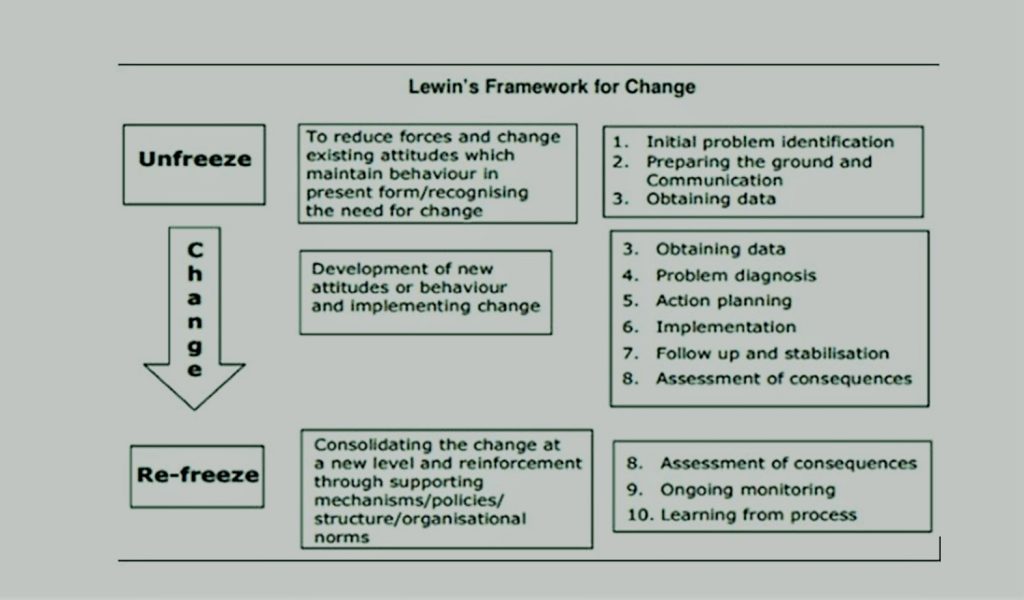
The Kurt Lewin Change Model
This is a very popular model for initiating change in the healthcare sector. The simplicity of those models is why it is widely implemented for leading a culture of change and a guide for its sustenance in the healthcare sector (Hussain & Ali, 2018).
The Kurt Lewin Change Mode has three stages that address maintaining and retaining change in the healthcare institution. The Lewin model’s stages are:
- Unfreeze: This involves determining the current behaviors and the need to change them. From the Hillingdon Hospital viewpoint, this can be specific to introducing a bar-code system for delivering medication to patients. Major components of this step include communicating with stakeholders, including administration, managers, and frontline nurses. By including frontline workers, there will develop a feeling of empowerment. This will help in overcoming their resistance to change as they will get a precise understanding of the importance of the change. Also, know how it will benefit both the hospital and the patients (Bozak, 2003).
- Change stage: This is the period in which the actual change takes place. With the example of the bar-coding facility at Hillingdon, sustained efforts from different teams such as information technology, clinical information services, nurses, administrators, and others. Bozak (2003) states that the nursing staff should be actively involved in this process to develop a feeling of ownership of the project. Some aspects that need to be considered include the timeline, educational requirements, equipment reliability, organizational leadership and culture, and impact on workflow (Spetz, Burgess & Phibbs, 2012).
- Refreezing: It is the final stage where the changed practice is refreezing and will lead towards a situation of evaluation and stability (Bozak, 2003). Continuous support on the part of the frontline workers and technology should continue until the applied change is considered as complete and all users are adaptive towards it.
Need Help or Advice in Academic Writing
See Samples
https://independent.academia.edu/shamsulIslam8
Need Help or Advice in Content Writing Management:
Would you like more advice? Do you have good practices to share? Express yourself in the comments.
Also, if you want help in writing content to drive more traffic and boost conversions; please get in touch through Contact our team.
Do you want help writing quality content, driving traffic to your website, and boosting conversions? You can contact me through my Freelancer.com profile also. I always prefer to work through my Freelancer.com profile for smooth functioning. Here you pay safely and securely.
Read More:
CIPD Profession Map | Human Resource Professionals
High Level Human Resource Management is Essential for Success
Want to Know About Theories of Motivation
References
1- Archambault, E., Bouchard, MJ., Defourny, J., Gardin, L., Jany-Catrice, F., Laville, JL., Lévesque, B., Nyssens, M., Petrella, F., Pinaud, S ., Prouteau, L., Richez-Battesti, N., (2017), Social and solidarity economy, socioeconomics of the 3rd sector, Louvain-la-Neuve: De Boeck Supérieur.
2- Berkman, L. F., Glass, T., Brissette, I., & Seeman, T. E. (2000). From social integration to health: Hilingdon in the new millennium.Social Science and Medicine, 51,843e857.http://dx.doi.org/10.1016/S0277-9536(00)00065-4
3- Bozak, M., (2003). Using Lewin’s force field analysis in implementing a nursing information system. Computers, Informatics, Nursing, 21(2), pp.80-85.
4- Cady SH, Wheeler JV, DeWolf J, Brodke M. Mission, vision and values: what do they say. Organ Dev J 2011;29:63 – 79
5- Castro De La Cruz, G., Human resources management in social economy enterprises, Thesis, Faculty of economic, social, political and communication sciences, Catholic University of Louvain, 2017
6- Claudia Campos Andrade, Ann Sloan Devlin (2014) Stress reduction in the hospital room: Applying Ulrich’s theory ofsupportive design. Journal of Environmental Psychology 41, 125-134.
7- Cordeiro, W. P.: 2003, ÔThe Only Solution to the Decline in Business Ethics: Ethical ManagersÕ, Teaching Business Ethics 7, 265–277
8- Davis MA, Miles G, McDowell WC. Environmental scanning as a moderator ofstrategy–performance relationships: an empirical analysis of physical therapy facilities. Health services management research. 2008;21(2):81-92.
9- Davister, C., Henry, A., Marée, M., Mertens, S. and Rijpens, J. (2010), Management of Social Enterprises, Liège: Edi.pro.
10- Hussain, S. H., & Ali, M. (2018). Kurt Lewin’s change model: A critical review of the role of leadership and employee involvement in organizational change. Journal of Innovation & Knowledge, 3(3), 123-127.
11- Jacobzone S. (2003) Ageing and the Challenges of New Technologies: Can OECD Social and Healthcare Systems Provide for the Future?, Geneva Papers on Risk & Insurance – Issues & Practice 28(2): 254-274. URL: http://www.blackwell-synergy.com/servlet/useragent?func=synergy&synergyAction=showTOC&journalCode=gene&volume=28&issue=&year=2003&part=null.
12- Lehman, K., (2008). Change management: magic or mayhem. Journal for Nurses in Staff Development, 24(4), 176-184.
13- McKendall, M., B. DeMarr and C. Jones-Rikkers: 2002, ÔEthical Compliance Programs and Corporate Illegality. Testing the Assumptions of the Corporate Sentencing GuidelinesÕ, Journal of Business Ethics 37, 367–383.
14- Pilzer,Paul Zane, 2002, ‘The Wellness Revolution”, John Wiley and Sons Inc, New York
15- Spetz, J., Burgess, J. F., & Phibbs, C. S. (2012). What determines successful implementation of inpatient information technology systems? The American Journal of Managed Care, 18(3), 157-162.
16- West DC, Ford J, Ibrahim EX. Strategic marketing: creating competitive advantage: Oxford University Press, USA; 2015.

